This Lebanese pea stew with meat is a fragrant and delicious midweek dinner. Simple to make and full of flavour – bazela is a true winner all around.
I love how the names of foreign dishes often sound so exotic compared to those of our own food culture. And sometimes the name is great, with a background story to match. Imam bayıldı (the imam who fainted) is a great example.
More often than not, however, what sounds exotic is merely a description. This homey Lebanese stew is a good example. Known as bazela wo riz in Arabic, it simply translates as “peas with rice”.
But while the name and ingredients are humble, the flavours are anything but!
How to make peas taste delicious
Green peas are an important food across the Eastern Mediterranean and Levent. Particularly in spring, when the peas are bountiful and fresh from the pod.
Growing up in the West, the only way I knew to prepare them was from frozen, boiling them for only a couple of minutes to ensure they retained that vibrant green colour.
We usually served them plain alongside pork or fish. And to be honest, it was rarely along, but alongside diced carrots and corn(!) as part of a bagged frozen mix.
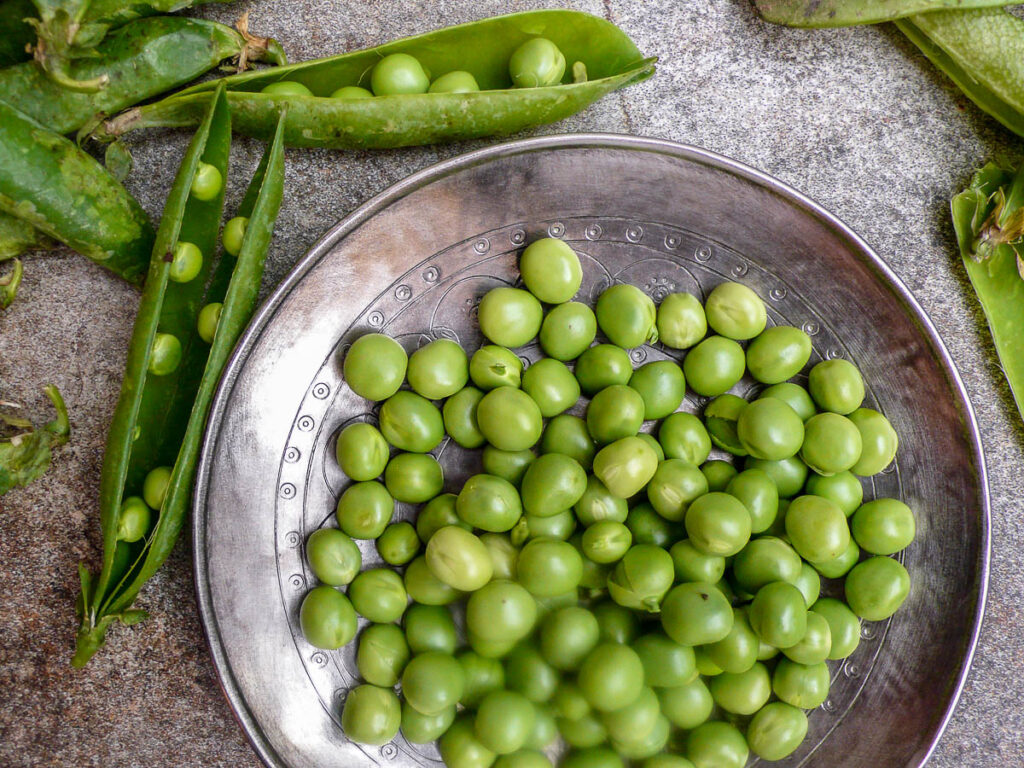
Luckily, the cuisines of the Eastern Mediterranean have taught me there are so many better ways of using the humble pea.
Now, I love using green peas when in season during the spring. I always buy plenty from the markets, making sure to stock up the freezer as well for the rest of the year.
The key, I find, is to use it as an integral part of the dish rather than as a (random) side dish to tick the “vegetable” box for dinner. And to not be afraid of cooking the peas until they’re completely tender.
What they lose in green vibrancy, they more than gain in flavour and comforting textures.
They work fantastically in stews. Not just this spiced Lebanese one with meat, but also in a vegan Greek pea & potato stew.
I love using them in fritters (thank you, Ottolenghi), I use them in salads, and I use them in all sorts of fried rice or bulgur dishes. Delicious!
A common tradition
This stew isn’t exclusive to Lebanon, of course. Like most of the dishes from this region, they originated at a time when borders looked very different than today – if they existed at all.
It’s all to easy to forget that the concept of the nation state is quite new, while the food eaten in the region that brought us agriculture ten millennia ago is, well, in many cases older than the oldest cookbooks known to man.
Though I’m not at this point very familiar with the spread of bazela, I would not be surprised to see the same or similar dishes in Syrian, Jordanian and Palestinian cuisines. Perhaps readers living in those (and neighbouring) countries can leave a comment and let us know of any local versions.
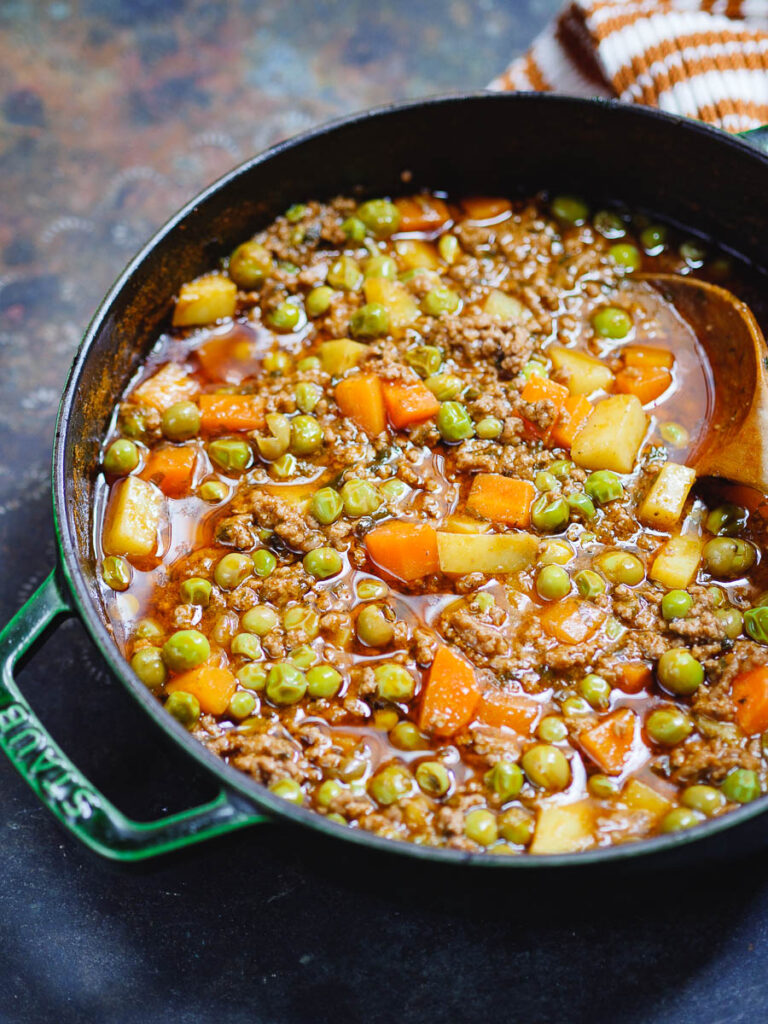
As I live in Istanbul, I’m most deeply familiar with Turkish cuisine. A very similar dish is common here as well, called bezelye yemeği in Turkish. Another exotic name, which can be translated as “pea dish”. The humbling name certainly matches the humbleness of the food.
The base of that dish is basically the same. Compared to this Lebanese pea stew recipe, however, most people in Turkey use less meat and more peas. As in many other Turkish recipes, the meat will be more for flavour than to be the main event. This is likely partly down to tradition and preference, and partly down to large amounts of red meat being unaffordable to people.
Where the Lebanese and Turkish versions diverge most, though, is in the use of spices. Contrary to what many people believe, Turks don’t actually like a lot of spices in their foods. Especially simple, vegetable heavy ones like this.
Turks have a heavy hand with cumin for their meatballs, and may use allspice and cinnamon to great effect in a rice dish fit for a feast. But otherwise, seasoning in Turkish cuisine is usually limited to salt, pepper and pul biber (Aleppo pepper – mild, fragrant chili flakes).
For this dish, they may add another layer of flavour with red pepper paste in addition to the tomatoes, but that’s it.
A few notes on this bazela recipe
In making this recipe, I’ve borrowed heavily from Zeina Mourtada, one of Sweden’s biggest food personalities. Born in Sierra Leone to Lebanese parents, she shares food from all corners of the world. Yet, nothing can compare to her passion for authentic Lebanese cuisine.
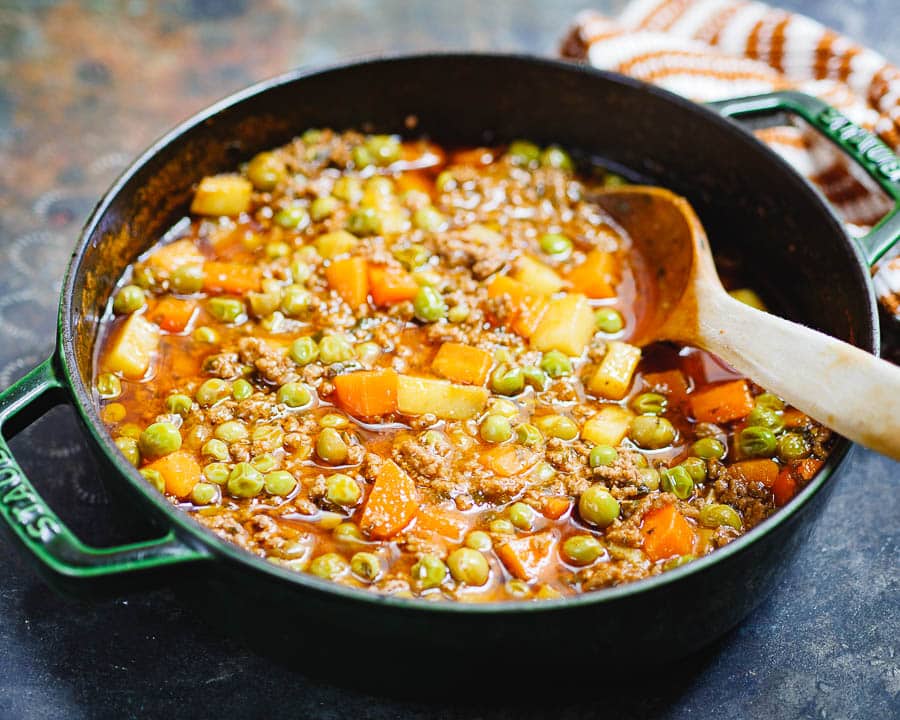
In her recipe, Zeina notes that her family adds potatoes. This isn’t common for this particular dish, but goes to show that the notion of “authentic recipe” is perhaps a construct too limiting for food culture.
Very common dishes will always be made in a myriad of ways, and while some versions are more widespread or “classic”, it doesn’t mean that the others are any more or less authentic. To Zeina’s family, this is just how it’s made.
I’ve tried the recipe with and without the potatoes, and I must say I agree with Zeina. So I’ve left them in, but by all means to feel free to omit for a version more Lebanese will recognise as “their own”.
As a side note, I’d like to mention that Zeina recently cooked up a feast fit for Eid at an important TV programme in my native Norway. Norwegian state broadcaster NRK is the only Western broadcaster to celebrate Eid with a dedicated live programme. This years’ edition was the third.
Last year, I was lucky enough to be invited to the same show to showcase Turkish & Middle Eastern meze. An amazing experience! (In case you’re curious, I made hummus, muhammara, mücver, kisir and ramadan pide.)
Serving tips for Lebanese pea stew with meat
Considering this Lebanese pea stew with meat is often referred to as “peas with rice”, it seems only right to serve it with Middle Eastern style rice. It is indeed the perfect accompaniment to this stew.
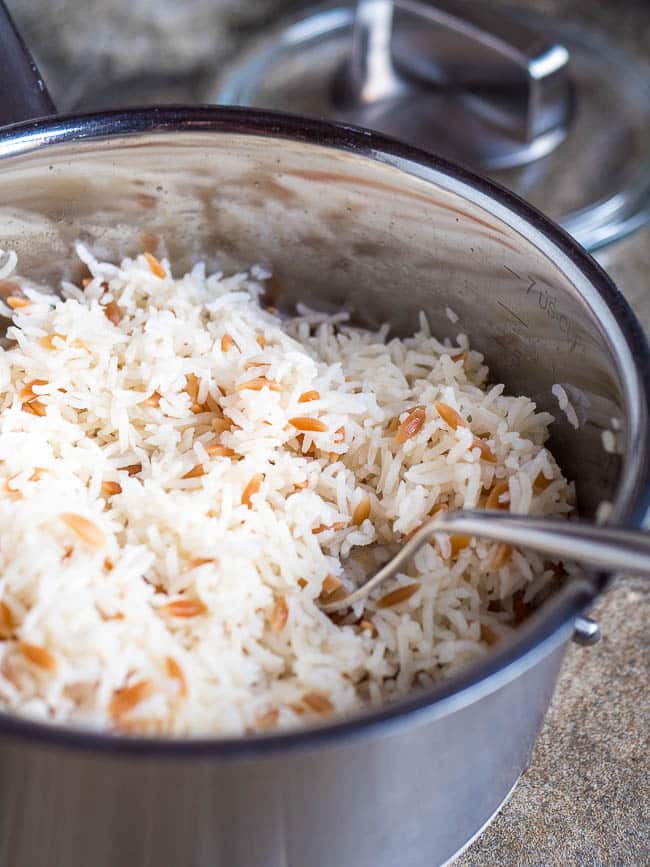
The Lebanese (and indeed Middle Eastern way of cooking rice is basically the same as for Turkish rice. It seems to me that the Lebanese tend to prefer using broken vermicelli pasta, while orzo pasta more commonly used in Turkey, but the method is the same.
Yoghurt of some kind is always great with these sorts of stews. While plain greek yoghurt is wonderful, for this dish I prefer cacik, the Turkish version of tzatziki.
A simple salad such as the traditional chopped salad is also great, but by no means necessary.
This recipe serves 3-4.
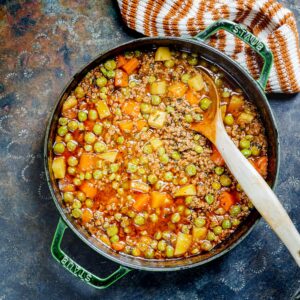
Lebanese pea stew with meat (Bazela)
Ingredients
- 3 Tbsp olive oil, I use a mild extra virgin
- 20 g coriander (cilantro), or flat leaf parsley, finely chopped
- 4 garlic cloves, finely chopped
- 500 g minced beef, or lamb
- 80 g tomato paste
- ½ tsp Lebanese 7-spice, see notes below
- 500 ml stock or water
- 200 g carrot, (2 large), cut into 1 cm (⅖ in) cubes
- 200 g potato, (1 large), cut into 1 cm (⅖ in) cubes (optional)
- 200 g green peas, podded weight (fresh or frozen)
- salt and pepper
How I make it
- Heat a thick bottomed pot over medium heat. Fry the coriander (cilantro) or parsley as well as garlic in the olive oil until starting to colour, stirring regularly, 1-2 minutes.
- Turn the heat up to medium/high, then add the meat. Brown the meat while mixing it well with the herbs and garlic.
- Turn the heat down to medium/low, then add the tomato paste and Lebanese 7-spice. Mix well and fry for a minute or so, stirring constantly.
- Add the stock or water and bring to a boil. Add the carrots, potato (if using) and green peas. Bring the to boil again, place a lid on and leave to simmer for 10 minutes. Take the lid off, then leave to simmer until the vegetables are tender and the stew has thickened, 15-20 minutes. Season with salt and pepper to taste as you go.
- Take off the heat and leave for a few minutes before serving hot, but not piping hot.


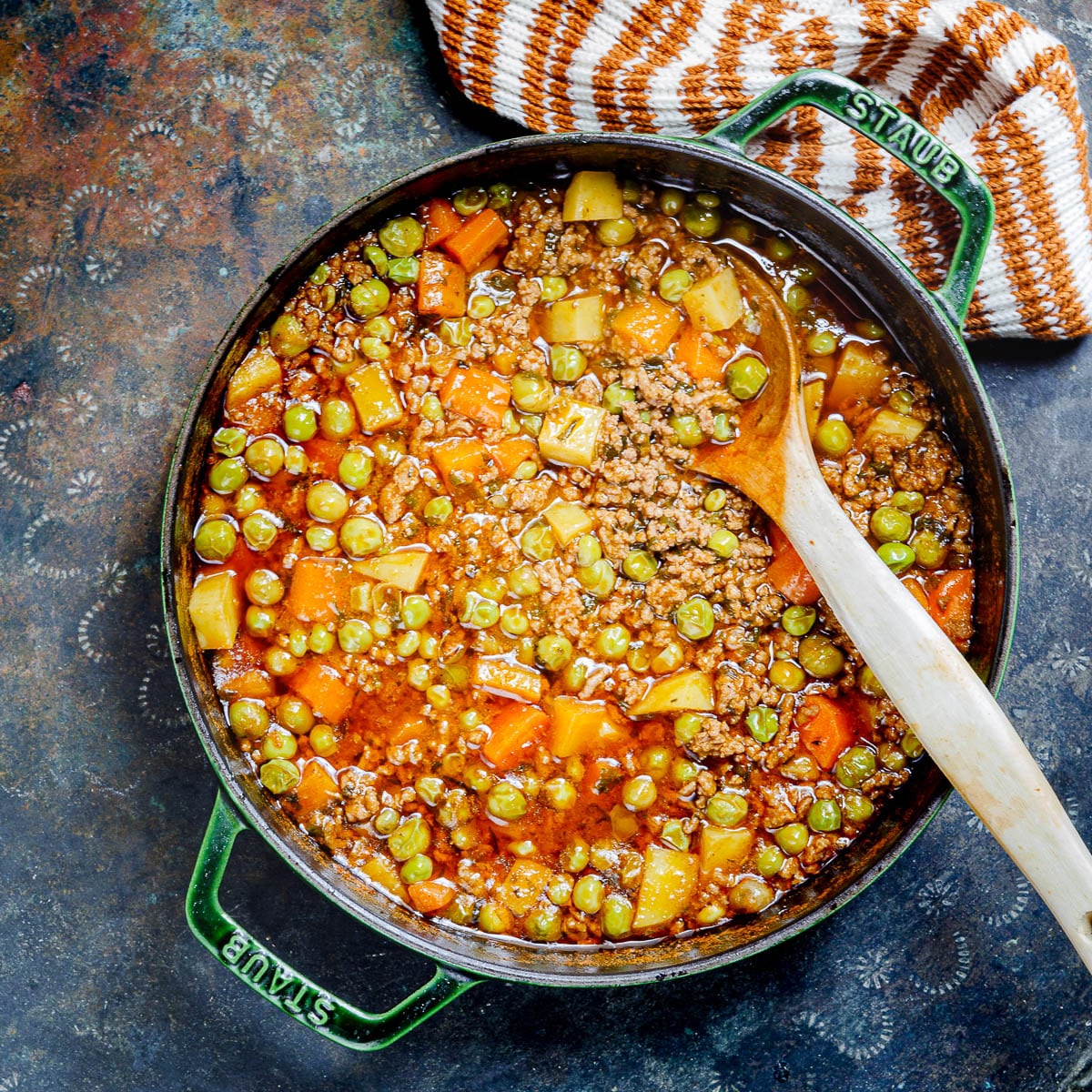


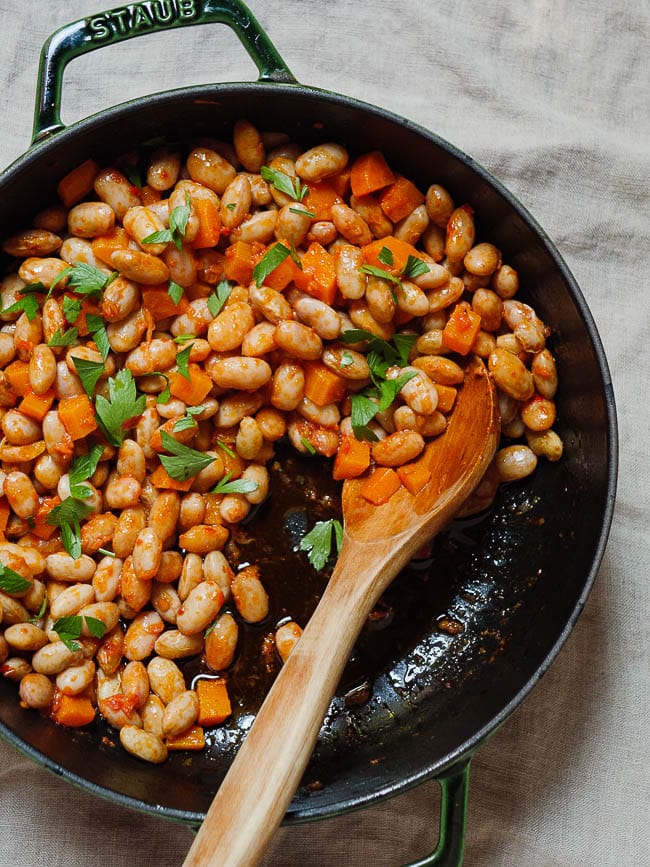
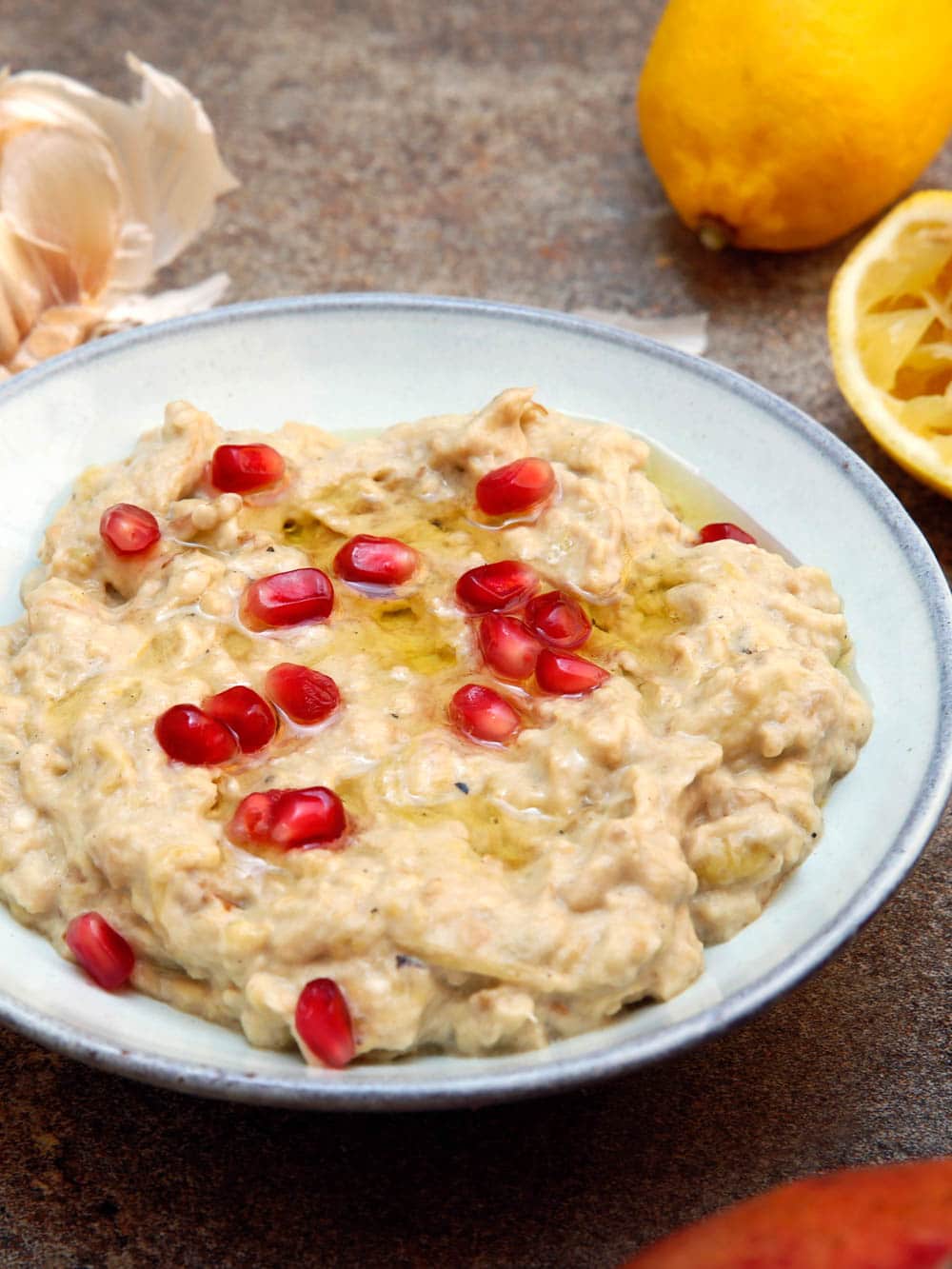
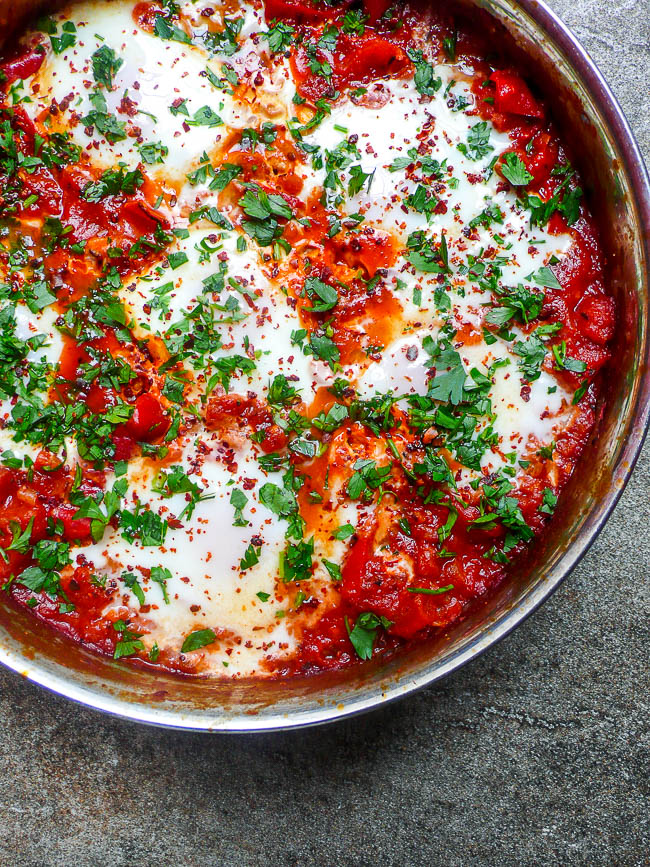
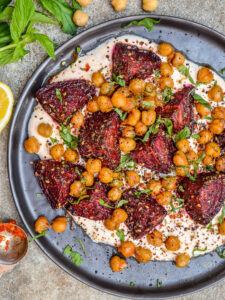
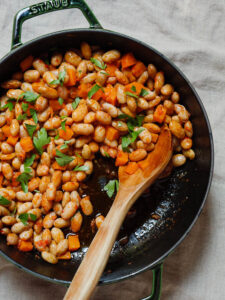
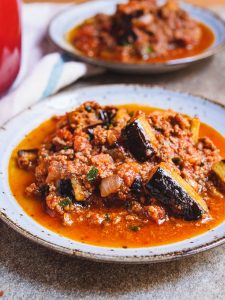




7 responses
I made this dish this week for my Lebanese boyfriend – he loved it so much I’m having to make it again tonight! It reminds him of his Sitty’s (grandmother’s) dish she used to make for him as a child. Thank you for this recipe – bound to be a favourite in our household.
How wonderful to hear, and for you to make that for him! Thanks for sharing.
I have lived in Syria for almost twenty years and my mother-in-law taught me to make this dish with potatoes and diced meat. Otherwise the recipe is mostly the same.
Can you please write how I can make the 7 spice lebanese?
Now added! It was supposed to be in the notes but I forgot to add the notes when I posted the recipe. Thanks for letting me know it was missing!
I live in Finike and I’ve just noticed the green peas the last couple of weeks at our Saturday market. I would love to try this recipe, but I cannot find your note on the Lebanese 7-spice mix. Did I miss it?
My apologies, that has dropped out! Thanks so much for letting me know. I’m adding the note back right away.